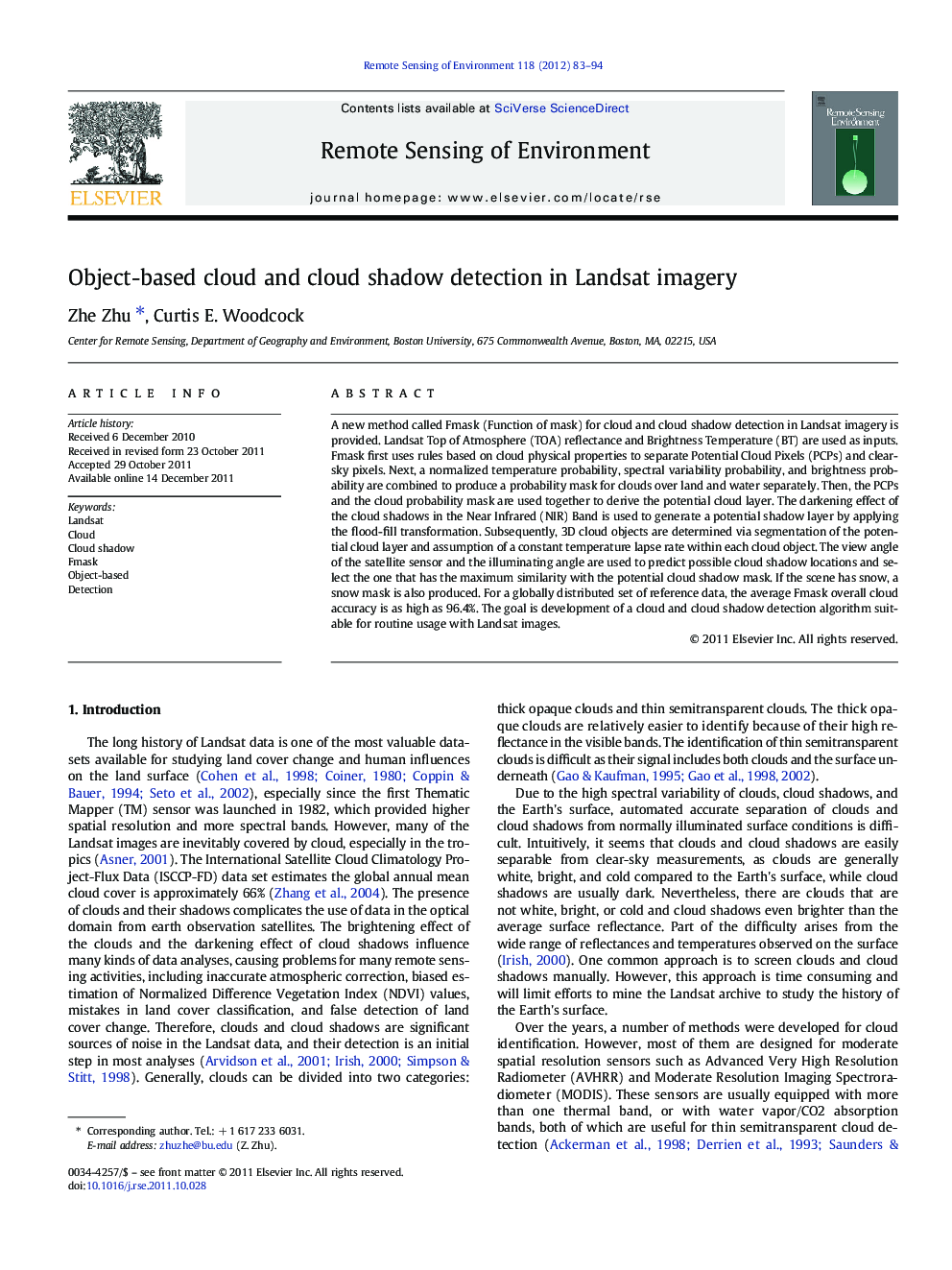| Article ID | Journal | Published Year | Pages | File Type |
|---|---|---|---|---|
| 4459328 | Remote Sensing of Environment | 2012 | 12 Pages |
A new method called Fmask (Function of mask) for cloud and cloud shadow detection in Landsat imagery is provided. Landsat Top of Atmosphere (TOA) reflectance and Brightness Temperature (BT) are used as inputs. Fmask first uses rules based on cloud physical properties to separate Potential Cloud Pixels (PCPs) and clear-sky pixels. Next, a normalized temperature probability, spectral variability probability, and brightness probability are combined to produce a probability mask for clouds over land and water separately. Then, the PCPs and the cloud probability mask are used together to derive the potential cloud layer. The darkening effect of the cloud shadows in the Near Infrared (NIR) Band is used to generate a potential shadow layer by applying the flood-fill transformation. Subsequently, 3D cloud objects are determined via segmentation of the potential cloud layer and assumption of a constant temperature lapse rate within each cloud object. The view angle of the satellite sensor and the illuminating angle are used to predict possible cloud shadow locations and select the one that has the maximum similarity with the potential cloud shadow mask. If the scene has snow, a snow mask is also produced. For a globally distributed set of reference data, the average Fmask overall cloud accuracy is as high as 96.4%. The goal is development of a cloud and cloud shadow detection algorithm suitable for routine usage with Landsat images.
► A new method for automated cloud and cloud shadow detection in Landsat images. ► It is the result of combining past approaches and a new object-based approach. ► It is an improvement over the traditional ACCA cloud algorithm. ► The average Fmask cloud overall accuracy is 96.4%.
